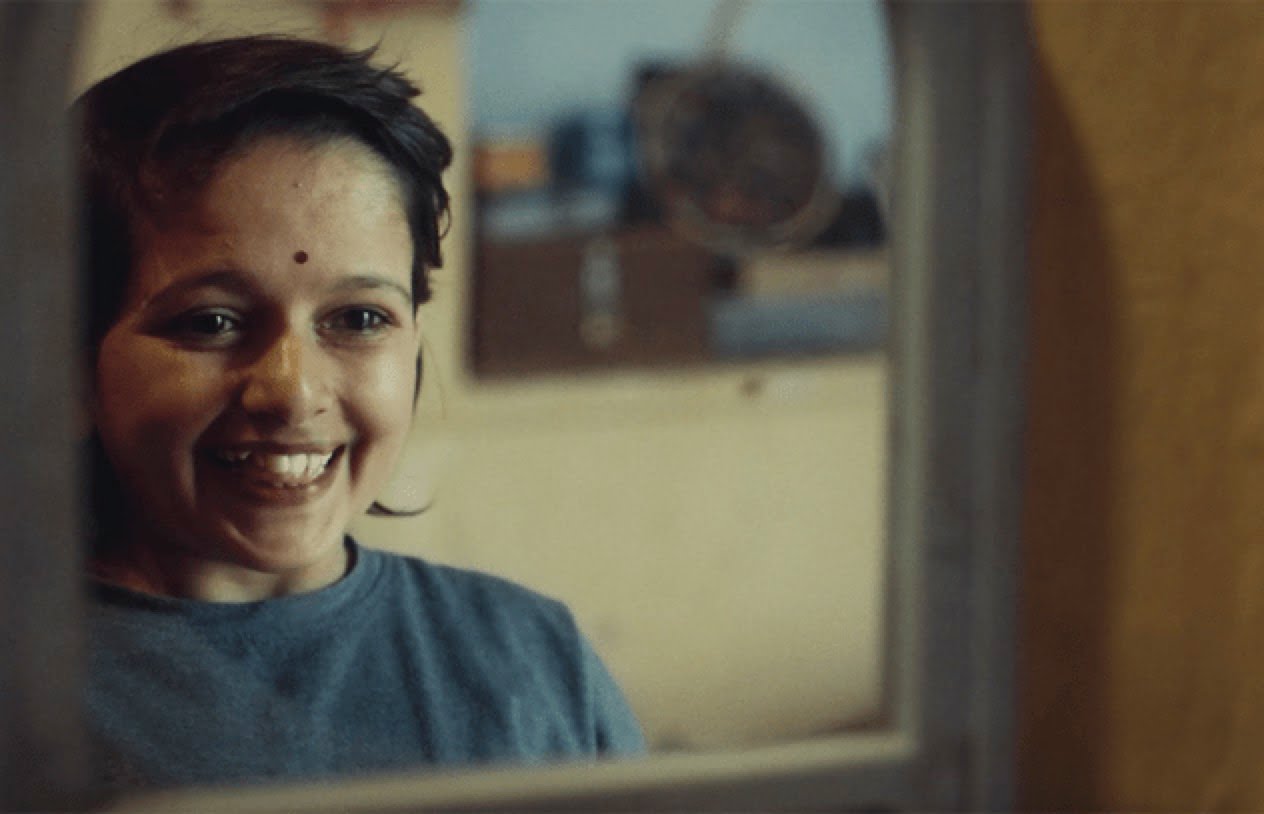On the International Transgender Day of Visibility, UNAIDS launched a two minutes thirty seven seconds campaign film titled The Mirror. I can’t help but feel elated at this beautiful initiative that intends to create visibility for Indian trans children. This short and sweet story of acceptance is something I wish was there when I was growing up.
The protagonist, a male bodied child sneaks out while their family is busy flying kites, to dress up and wear makeup. As I went through these ‘Oh so relatable’ scenes, I felt nostalgia, happiness, anxiety and also worry. Nostalgia because I have been in that place, happiness because finally I see someone going through similar experiences, anxiety because I know what it feels like to be caught, to feel ashamed. But amongst all these much welcomed emotions there were, I am afraid, worry.
And that is the reason I and all those who have watched the film need to reflect. Are we missing something? Are we there yet? Is this all that is there to representing trans children?
The film is set in Rajasthan. It opens with an evening of kite flying with all the members of the family on the rooftop. Our protagonist, dressed in typical boy clothing, sits unhappy while everyone is thrilled about flying kites. Their mother urges them to join, but they refuse and sneak down to wear make up, dress up and dance in a feminine way.
Taking advantage of family gatherings to express themselves the way they want, away from the eyes of judgement is something that I could instantly connect with, but what I could not was the stereotypical presentation of trans* feminine people. An aversion from anything which is remotely sports. The child was unhappy with kite flying. Now, one can easily argue that this is a story of person, it is not a representation of all trans children, but are we forgetting that when there is so less representation, whatever we create becomes the story of the entire community! Are we not creating a role model which defines only a certain way of being trans.
Also read: FX’s POSE Shows How To Represent Queer & Trans Communities The Right Way
In a world where trans folks are hardly given a space to claim, their visibility is almost always erased or ridiculed. The film is definitely a positive representation of queer trans people and children and deserves applause but needless to say, not without scrutiny or criticism. The film follows a highly predictable storyline. The bindi, the lipstick, the dupatta, the dance has been the only way of depicting transgender people on screen. There is nothing more to be trans and everything for a trans person must always revolve around jewellery and adornment.
It is time we see more complete, more wholesome characters, someone who has a personhood, a backstory, someone who does not just enter the frames to dance and to dress up. Many trans, queer and gender non conforming folks might have similar experiences as shown in this film, but there are many who did not. Often fingers are pointed that trans people reinforce gender stereotypes, but what is overlooked is the cis-het gaze to look at gender. One’s gender is only valid if it passes the ‘cis-het’ standards of gender, and when trans folks seek to receive validation they are blamed that they are upholding stereotypes. The Mirror perfectly and successfully portrays a trans character which would most certainly receive acceptance through the cis-lens.
The Mirror reaches a climax where the audience is left biting their nails to find out whether the child would receive acceptance or rejection. Once again queer lives are put through the test. Once again the same old story where there is a question, shall there be acceptance! Even though I acknowledge that this is the reality of many queer people, but the question is, is this ideal? Is this normal? Should accepting a queer child be a question at all? The answer to all this is strongly, unapologetically and vehemently ‘No’. It is now more than ever important to normalise acceptance and shift from suspense driven perspective in representing queer-trans people.
Also read: “Nobody Affirmed My Queerness”: Experience Of Childhood Counselling Sessions
It is important to remember that rejection is not normal and creating an event that would open up a space to feel thrill, excitement and adrenaline rush for the audience, in a situation which is a place of trauma for many of us is not okay! Creating a space where everyone apart from the trans person has the agency to choose, has the power to deny the trans a person’s rights are overrated.
We want to see more films where acceptance is unsaid, where love is non negotiable, where there is not even a moment’s pause before one embraces a trans child. Overall the film is a much needed yet an incomplete tryst to celebrate the Transgender Day of Visibility. It is emotional yet unidirectional. It is brave but very much in binary, it is beautiful yet stereotypical.
Featured Image Source: a still from the film ‘The Mirror’
About the author(s)
Riju Banerjee is 27 years old and works at The YP Foundation. She is a Teach for India alumni who is passionate about human rights, mental health, social emotional learning, writing, film making and intersectional feminism. She is an educator who strongly believes in inclusive education and is an advocate of children's voices and agency.




